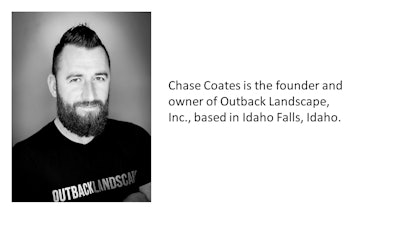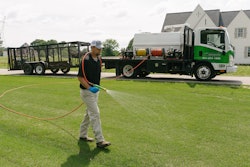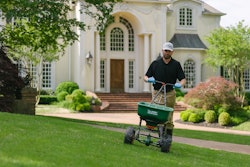
Once you install your client’s plants in the ground and brighten up their landscape, you might be debating between the best material to go on top. Is it mulch, rocks, or a simple topdressing of soil? There are pros and cons to each, but you’ll want to make the best choice so that your client’s plants will thrive. At Outback Landscape, we certainly work with both mulch and stone but don't feel that soil by itself is the best idea.
Let’s dive into how each option shakes out.
Choosing mulch
Shredded bark is the king of mulch and can either be natural or dyed dark brown for a richer look. It’s a simple choice but comes with plenty of benefits.
Pros of using mulch
Bark mulch is a water-wise choice. It conserves water by holding in the soil’s moisture so that your client’s plants will require less irrigation. It also protects precious plant roots from temperature extremes. This includes keeping roots warm in cold weather and cool in the summer heat by acting as an insulation barrier.
Mulch also helps to prevent rain from washing away the soil and it decomposes over time, adding nutrients to the soil.
Mulch also discourages weed growth—and you can’t overlook the fact that it adds aesthetic appeal simply because it gives beds a neat and tidy appearance.
Cons of using mulch
In my opinion, there aren’t too many downsides to using mulch. But one could be the fact that it may blow around if you have clients with windy properties. Clients might also see the fact that mulch doesn’t last forever as a negative. It does need to be periodically replaced.
Choosing decorative stone
Many clients like the idea of using decorative rock in their landscape beds—particularly if drainage is a concern. But rock isn’t going to create an ideal growing environment for many plants. Let’s look at some more of the pros and cons.
Pros of using decorative stone
Rock can help to create excellent drainage, making it a good choice for clients who have water issues on their properties. It will also stay put and won’t blow away on a windy property. And of course, rock is a “once and done” plant bed material. It doesn’t need to be re-installed each season for a fresh look.
Cons of using decorative stone
Rock is not going to be the optimal growing environment for most plants. Rocks can really heat up and make it difficult for plants to thrive. It also does not offer any nutrient benefits to the soil (like mulch will).
Weeds have also been known to sprout through rock more easily than mulch as there are often gaps. Plus as the rock heats up the soil, this can create conditions where heat-loving weeds thrive.
If down the road, your clients decide they want their plant bed to have more plant material, it can be a pain to remove all of the rock and turn it into a true garden bed. Rocks can also be pretty pricey compared to mulch. Of course, clients have to weigh the fact that it doesn’t need to be regularly replaced.
Choosing soil
Some of your clients might ask if they could just use soil without any mulch or rock on top. But there can be some downsides to this approach. Let’s look at the pros and cons.
Pros of using soil (by itself)
There is no extra cost associated with leaving the plant beds “bare,” so clients will likely see the cost savings as a pro.
Cons of using soil
Bare soil can dry out quickly with the sun and wind. On top of that, rain can easily erode the soil without the protective layer of a topping like rock or mulch.
Your clients will also lose the weed suppression of ability to have a top layer (particularly mulch). And soil by itself does not have the aesthetic appeal of adding mulch or rock to the top.
Making the best choice for your clients
At the end of the day, we see mulch as having the greatest benefits for many of our clients. But for some, who don’t care about having a variety of plants, and want an extremely low-maintenance plant bed, rock can work, too. It comes down to helping your clients choose what’s best for them. As a landscaping professional, you can help set them up for plant bed success with the right choice.










